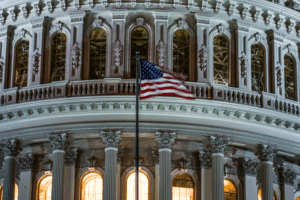
US Autos: “Big!” Truck Tariffs
Will Lee - Analyst, Autos, CreditSights
Todd Duvick, CFA - Head of Autos, CreditSights
Jim Williamson - Senior Analyst, Autos, CreditSights
Jack Hird - Analyst, CreditSights
2 October 2025
Insights into US heavy truck tariffs impact analysis, including:
- Tariff Announcement & Scope: Understand the implications of the newly announced 25% tariff on heavy trucks manufactured outside the US, effective October 1, 2025, and what it means for the industry’s future.
- OEMs: Winners & Losers: See which major truck manufacturers—PACCAR, Volvo, Ford, and GM—are insulated from the tariffs, and why Daimler and Traton appear most exposed to new risks.
- Freight Market Pressure: Learn how the US heavy truck tariffs impact analysis anticipates increased costs, delayed fleet renewals, and extended freight recession, especially for smaller carriers.
- Supplier Strategies & Pass-Throughs: Discover how OEMs and suppliers are leveraging USMCA compliance, localized sourcing, and pass-through pricing agreements to shield margins and customers.
- Forecasts & Deferred Recovery: Explore projections for North American truck volumes and why pent-up demand and regulatory uncertainty may postpone a meaningful industry recovery well into 2026.
Executive Summary
- President Trump announced on Truth Social a 25% tariff on all heavy trucks made outside the U.S., effective October 1, 2025. The announcement concludes the Section 232 investigation, but a formal proclamation detailing the scope of the tariffs, including parts, components, and USMCA exemptions, has yet to be published and may be delayed by the government shutdown.
- We note that PACCAR, Volvo, Ford, and GM are largely insulated from the new tariffs due to localized production and USMCA compliance while Daimler and Traton appear more exposed. Ford and GM medium-duty trucks are made in the US and not impacted and PACCAR’s heavy-duty trucks are mostly U.S.-made. Allison Transmission sources 85% of materials from North America, leaving only a modest direct tariff impact.
- The new tariffs are expected to deepen the prolonged freight recession by increasing costs and compressing carrier margins. Higher truck and parts prices will delay fleet renewals, weigh on freight volumes, and further constrain smaller carriers’ ability to modernize fleets. Industry recovery will likely be postponed as demand remains weak, operating costs rise, and regulatory and tariff clarity remains unfavorable, with PACCAR expecting pent-up demand to contribute to a deferred recovery.
- Direct tariff impacts have been limited so far, but the new truck tariffs present an additional headwind for the industry. Companies have managed costs through pass-through agreements, long-term supply arrangements, and compliant sourcing. Additional tariff impacts can be expected to rise in 4Q25 following a formal announcement.
Fill out the below form to view the full article:
Please note that we can only respond to valid business email addresses and the interview is already available to clients.
Recently Published
Research



